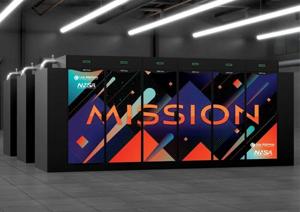Los Alamos National Laboratory (LANL) has announced plans to introduce two new supercomputers, named Mission and Vision, which are set to become operational in 2027. These advanced computing systems will enhance modeling and simulation capabilities essential for national security science, research, and artificial intelligence applications throughout the National Nuclear Security Administration (NNSA) complex.
The development of these supercomputers will be a collaborative effort with technology firms Hewlett Packard Enterprise (HPE) and NVIDIA, with HPE serving as the prime contractor. According to a news release from the laboratory, the supercomputers will leverage HPE’s recently unveiled Cray Supercomputing GX5000 platform, alongside the NVIDIA Vera Rubin platform specifically designed for the demands of AI-era supercomputing.
Investment in National Security Science
Brandon Williams, NNSA Administrator, emphasized the importance of these new systems, stating, “NNSA has a proud history of applying science and technology to national security challenges. The next generation of NNSA supercomputers marks a significant milestone in ensuring America’s leadership in the global AI race.” He credited the previous administration for advancing the capabilities that will underpin Mission and Vision, which are expected to enhance analysis and predictions vital for effective and secure national defense strategies.
Funding for the supercomputers will come from “anticipated future funding, contingent upon the availability of appropriations,” as noted in the release. Once operational, Mission will replace the current Crossroads computing resource and will handle classified work. It is designed to execute multiple simulations concurrently, which will be crucial for tackling large and complex computational tasks.
Enhancing Research and Development
Vision, on the other hand, will build upon the existing Venado supercomputer that was installed in 2024. This system will be dedicated to unclassified work and will support various research projects in areas such as national security, materials science, energy modeling, and biomedical research. Both supercomputers will be equipped with similar AI capabilities, allowing them to manage multiple workloads and user groups simultaneously.
Thom Mason, LANL Director, remarked, “The Mission and Vision systems represent a significant investment in our national security science and basic science capabilities. HPE and NVIDIA are experienced partners in this space, capable of delivering technology that offers the capabilities Los Alamos needs to fulfill its essential role.” He added that these systems are specifically designed to advance supercomputing in the AI era, aligning with LANL’s mission to integrate artificial intelligence into its modeling and simulation efforts.
Details regarding project timelines and completion specifics will be released as the initiative progresses. The introduction of Mission and Vision reflects LANL’s commitment to maintaining a leading position in scientific research and national security through technological advancement.
